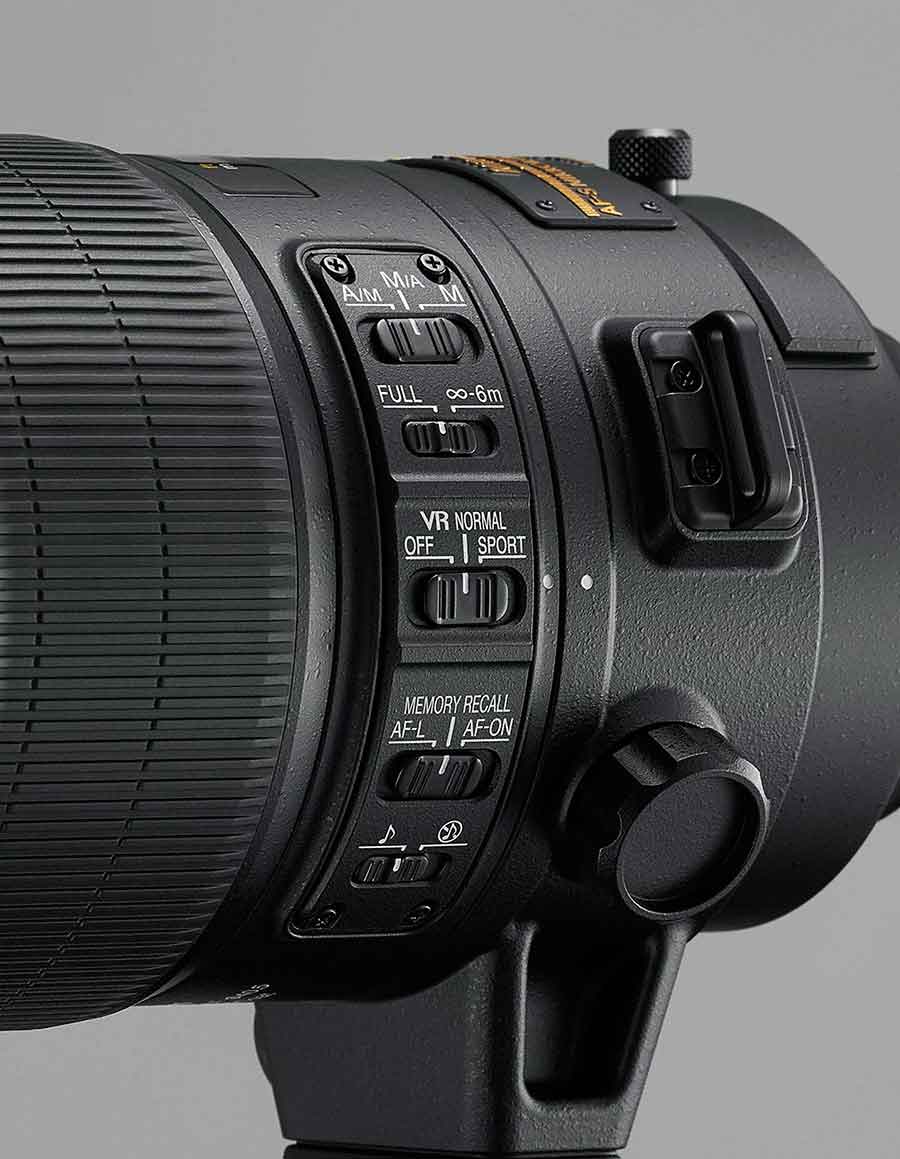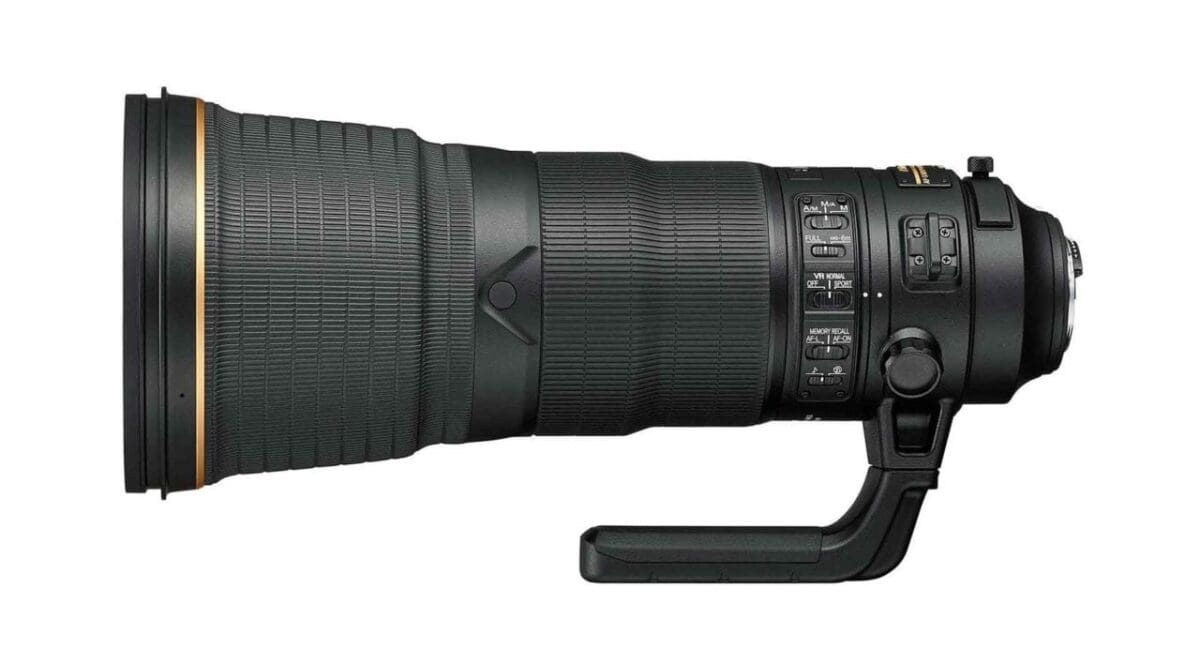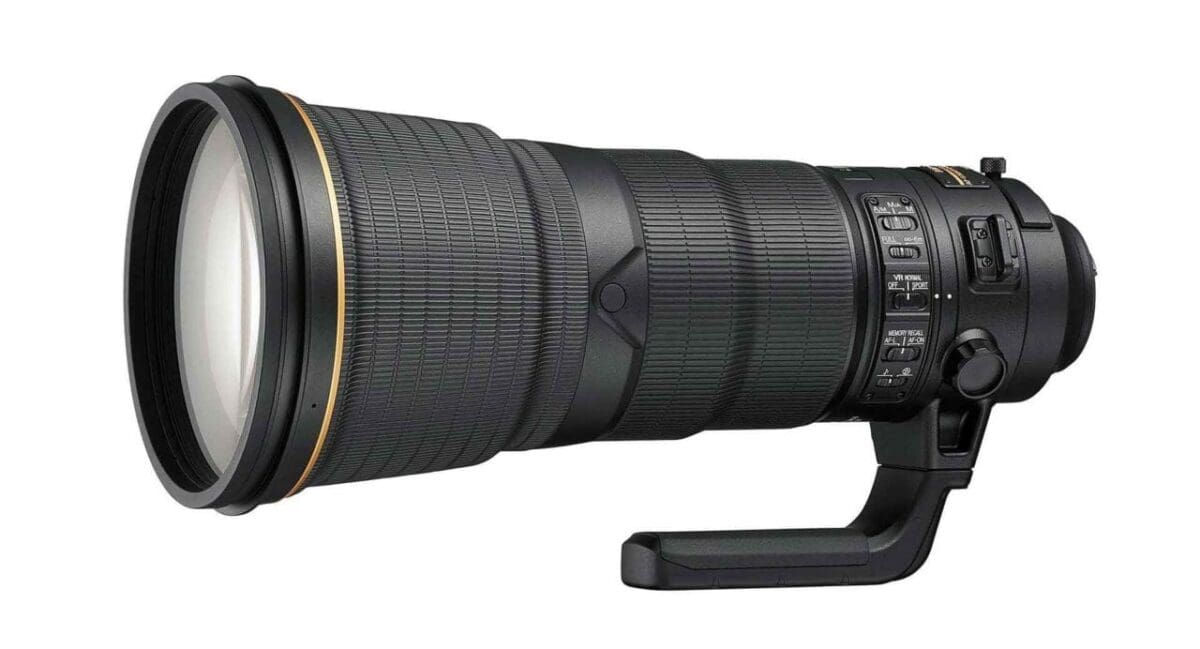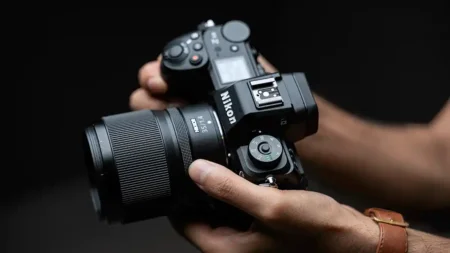The Nikon 400mm f/2.8E is the fastest aperture super telephoto lens in the Nikkor line up. For professional sports, wildlife or press photographers who need that sort of reach, together with a large aperture to achieve fast shutter speeds in low light, it’s a highly desirable lens.
Updated from its predecessor, the Nikon 400mm f/2.8G VR, Nikon’s latest 400mm f/2.8 has been completely redesigned to make it lighter and easier to use. Costing a staggering £10,400, is it worth the money?
I put it through its paces at a number of sports and press events to find out.
Nikon 400mm f/2.8E Build & Handling
Having completely redesigned this lens using lighter fluorite glass for the large front elements, combined with a lighter magnesium alloy barrel construction, Nikon have achieved something quite astonishing.
Not only is the new 400mm f/2.8E 20% lighter than its predecessor, now 3.8kg compared to 4.6kg, more significantly the new optical arrangement shifts the weight towards the back of the lens, making it much easier to use.
Whereas front heavy super telephoto lenses can be challenging to use without a tripod or monopod, I was able to comfortably shoot with the 400mm f/2.8E hand held for prolonged periods.
This is a really big deal, making the new 400mm f/2.8E much more practical and versatile in environments where using camera support can be limiting.
The weight-shift has also allowed Nikon to reposition the tripod collar nearer the back of the lens, so controls to rotate between a vertical or horizontal position with the lens on a monopod are a little closer to the camera.
Five switches to control autofocus and image stabilisation (VR), along with the focus distance window, are also positioned close to camera for ease of use, and the 400mm f/2.8E features a large well-weighted focus ring that spans roughly a third of the barrel.
Another design improvement is the new single unit HK-38 lens hood, which, compared to the two-piece lens hood previously supplied, is much quicker less fiddly to attach.
The large front element is protected with a fluorine coating that repels dirt, dust and moisture, reducing the frequency you need wipe the glass when shooting in tricky conditions.
The new 400mm f/2.8E also comes supplied in Nikon’s new and attractive mottled silver finish CT-405 flight case, which is well padded and designed for easy stacking and storage.
SEE MORE
Best Nikon DX lenses to start your collection
Best Nikon FX lenses to start your collection

Nikon 400mm f/2.8E Performance
Autofocus on the new Nikon 400mm f/2.8E is impressively quick. Featuring Nikon’s Silent Wave Motor (SWM), autofocus snapped into position in a blink of an eye in both good outdoor light and under bright artificial lighting.
In poor lighting conditions, such as dimly lit areas of a conference auditorium, focus was a little slower but still very good considering and didn’t cause concern.
Autofocus tracking using the 51-point 3D tracking on D3s and D750 was no less impressive, and I achieved a very acceptable focus hit rate tracking fast moving footballers under floodlight, as well as canoeists on a white water slalom course.
I can’t wait to try it out the new 400mm f/2.8E on the new D5’s more advanced 153-point autofocus tracking module. With three times as many autofocus targets, including many more cross-type sensors, I expect Nikon’s high performance super telephoto lenses to be ridiculously quick and accurate.
The 400mm f/2.8E also offers a number of controls to improve your focus hit-rate when shooting fast moving subjects. Firstly the Focus Limiter Switch prevents the lens focusing on anything closer than 6m.
This is invaluable shooting action in the distance, reducing focus hunting where the lens tries to lock on to subjects passing in front that you’re not interested in. Focus buttons on the lens barrel can also be programmed via the Focus Selector switch for even more control.
There are three settings including, AF-L to lock focus, AF-ON to activate autofocus in the usual way and Memory Recall to set focus back to a predetermined focus distance.
Once set, all of the focus buttons perform the same operation, but with four of them positioned around the barrel of the lens there’s always one conveniently placed regardless of whether you’re shooting vertically or horizontally.
Personally I set the focus buttons to Memory Recall, so I can quickly reset focus distance to where I start autofocus tracking. That, combined with the limiting the focus between 6m – infinity, helps the 400mm lock on and start tracking quickly, reduces hunting and significantly boosts your focus hit-rate.
Nikon’s lens based image stabilisation, or Vibration Reduction (VR), has been improved on the new 400mm f/2.8E, too. VR now offers 4 stops of stabilisation, a new SPORT mode and control via a VR switch, as opposed to the more cumbersome mechanical VR ring on the 400mm f/2.8G.
SPORT mode recognises panning, or tracking, movements so that the VR giros only correct for vertical camera movement, with NORMAL correcting both vertical and horizontal movement and VR can be turned OFF if required.
As well as facilitating a more stable image in the viewfinder, particularly when hand holding such a long telephoto lens, VR also helps you achieve sharp shots with relatively slow shutter speeds.
The amount of magnification produced by a 400mm focal length normally requires the use of fast shutter speeds around 1/500th sec for images to be free of camera shake.
Stabilising the image VR effectively corrects minor camera movements, which are magnified by the long focal length, allowing the use of slower shutter speeds down to around 1/30th sec.
Image stabilisation has no impact on subject movement however, so if you’re shooting fast moving subjects a fast shutter speed is still required to prevent motion blur.
Shooting relatively static subjects however I was able to achieve sharp handheld shots using a slow 1/60th shutter speeds at the conference and 1/200th shooting portraits studio flash.
The Nikon 400mm f/2.8E is compatible with all three of Nikon’s TC-14E III, TC-17E II and TC-20E III teleconvertors for extending the focal length.
Combined the 400mm f/2.8E with these teleconvertors make for a very versatile super telephoto set up when covering different sporting events or wildlife subjects.
Whilst for small birdies or certain sports such as motor racing 500mm, 600mm or even 800mm Nikon super telephoto lenses offer greater reach, there’s nothing more frustrating than being too close to a subject with a very long lens.
If you can’t get further back for the composition you want you’re a little stuck, but using the 400mm f/2.8 with teleconverters offers more flexibility. Of course you lose a little light using them, which affects the maximum aperture available, and images aren’t quite as sharp either.
Used with the 400mm f/2.8, the TC-14E III converts it to 560mm f/4, TC-17E II to 650mm f/4.8 and TC-20E III to 800mm f/5.6.
What’s more, shooting on Nikon’s latest DSLRs featuring autofocus targets with f/8 and -3Ev sensitivity, autofocus is not only fully operational but, in my experience of using the TC-17E II also pretty impressive.
The TC-14E III is the favoured teleconvertor for many photographers however, as it has the least impact on the maximum aperture, image sharpness and autofocus performance.
The final enhancement, the Electromagnetic Diaphragm – or more simply a little motor in the lens to operate the aperture mechanism, is designed to improve the consistency of exposures during continuous high speed shooting.
Having shot a number of high-speed bursts, in a range of different lighting conditions during the field test, I was pretty impressed with the results recording consistent exposures of up to 20 frames in a burst.
That said, I’ve shot on older 300mm f/2.8G, 400mm f/2.8G and 500mm f/4 lenses without the new Electromagnetic Diaphragm and have to say I’ve never noticed or been overly concerned by inconsistent exposures when burst shooting.
SEE MORE
Best Canon EF lenses to start your collection
Best Canon EF-S lenses to start your collection
Nikon 400mm f/2.8E Sample Photos
[FAG id=7922]
Nikon 400mm f/2.8E Image Quality
All the improvements to handling and features would count for very little if the new design didn’t capture the same high quality images as its predecessor.
Image quality on the new 400mm f/2.8E is phenomenal however, with outstandingly sharp results in both the centre and edges of the frame.
Contrast is also excellent with little interference from atmospheric haze, which can be a problem on super telephoto lenses. The long focal length and maximum aperture produces smooth, creamy backgrounds to help isolate subjects in the foreground with attractive ‘bokeh’ and specula highlights, too.
Two Extra-low Dispersion (ED) elements keep chromatic aberrations well under control too, with no problematic heavy fringing visible. Nikon’s Nano Crystal Coating on the lens elements helps reduce lens flare, which wasn’t an issue shooting back-lit birds flying into the relatively low winter sun.
That said I’d recommend keeping the HK-38 lens hood attached at all times as well, which is necessarily large to shield the front elements from light entering from the side, bouncing around and causing flare.
Extremely fine details such as the individual hairs – on Jeremy Corbyn’s beard and the squirrel’s whiskers! – are clearly visible and well defined.
Using the TC-17E II teleconvertor, resolution is a little softer particularly shooting at f/4.8. Stopping down to f/5.6 or even better f/8 improves sharpness with the teleconvertor, but at the maximum aperture, and with a little postproduction sharpening applied, results are still very good.
The 4-stop VR ensured acceptably sharp results using slow 1/60th sec in the poorly lit areas of a conference venue, which meant I still had a shot on without having to bump ISO to silly sensitivities.

Nikon 400mm f/2.8E Verdict
Costing £10,400 the new Nikon 400mm f/2.8E is a serious and significant investment for any photographer but offers shooting possibilities very few other lenses can.
If you need high quality pictures from afar in low light it’s the fastest aperture super telephoto lens in the Nikon line up, and compatibility with all three Nikon teleconvertors makes it versatile for a range of long lens sports or wildlife subjects.
All of that is also true on the older 400mm f/2.8G version however, which you should be able to pick up for around half the cost 2nd hand. Where the new 400mm f/2.8E is unique though is its 20% weight reduction and the shift in its centre of gravity towards the camera.
It’s not an overstatement to say this has revolutionised the Nikon 400mm, making it feel like a completely different lens. It’s now possible to shoot comfortably hand held for prolonged periods, including using relatively slow shutter speeds thanks to the VR update.
Other design improvements such as the move to a VR switch, the single-piece lens hood and repositioned tripod collar are less significant on their own, but all add up to a slicker and easier to use 400mm.
As you’d expect from a £10,000 Nikon lens the image quality and autofocus performance are outstanding delivering tack sharp results, beautiful bokeh and no Chromatic Aberration.
Whether you’re buying your first super telephoto, or looking to upgrade, put the Nikon 400mm f/2.8E on the top of the list.
READ MORE
What lens is best for your camera? Here’s how to choose…
What is a telephoto lens (and when to use one)



